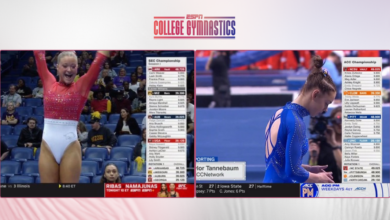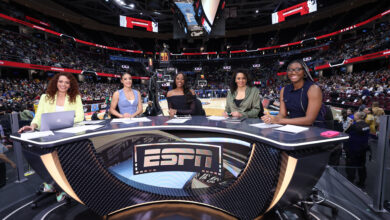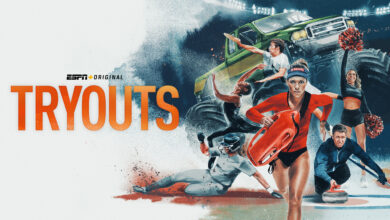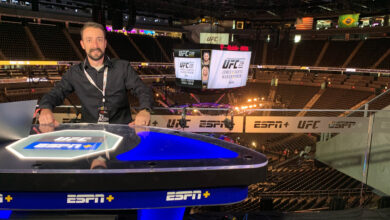Pylon Cam captures OBJ’s winning end zone footwork on MNF
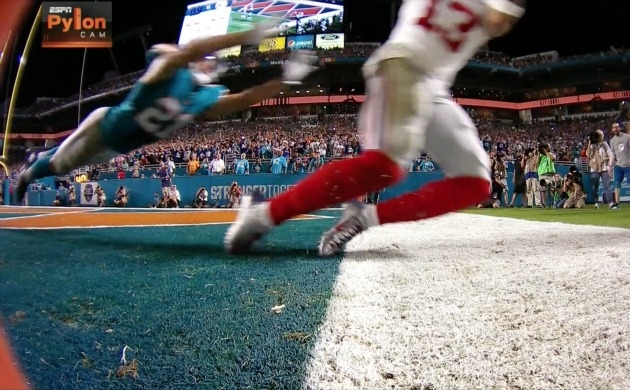
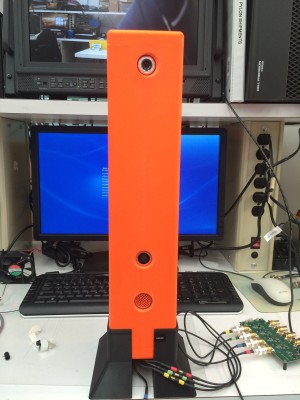
As is customary for ESPN, the network is not resting on its pylons laurels. In fact, a Pylon Cam 2.0 system is already being developed, primarily for college football. It will debut during Saturday’s New Orleans Bowl (ESPN, 9 p.m. ET). Still utilizing four cameras in each pylon, ESPN is taking the camera out of the top of the pylon and moving it to the goal line side, albeit with a much longer lens. The current system uses a 2.3mm lens. The new camera, higher up the goal line, will use a 12mm lens.
Said Jed Drake: “This is going to give us angles that are far tighter – which will get us further down the goal-line.”
Provided that this weekend’s test goes well, fans could expect to see the new Pylon Cam perspectives during the College Football Playoff semifinals and National Championship games in January.
ESPN debuted Pylon Cam during the 2015 College Football Playoff National Championship in January. After a series of NFL preseason tests, an enhanced system was then introduced on Monday Night Football in September.
While Pylon Cam already had received positive reviews all season for its unique angles of key end zone plays, the Dec. 14 MNF game provided the best example yet of why the system is such a valuable tool.
All-Pro wide receiver Odell Beckham Jr. made an acrobatic, toe-dragging catch in the endzone with the New York Giants trailing the Miami Dolphins by a touchdown. (It’s gotta be the gloves, right?) The play was initially ruled an incompletion before the call was eventually overturned based on the Pylon Cam angle, which showed – in spectacular fashion – that Beckham had, in fact, gotten both feet in-bounds. The Giants tied the score and eventually won the game, 31-24.
“The all-telling angle on Beckham’s catch is the best application of Pylon Cam to date because of the circumstances – with a tie game and the fact that the touchdown was appropriately awarded to the Giants,” said ESPN Senior Vice President of Production Innovation, Jed Drake. “It allowed them to win the game and remain in a three-team tie with Washington and Philadelphia for the division lead. I don’t know of anything that could be more definitive and important.
“Since we tested this in August and brought it to the NFL,” he said, “we’ve been able to take these images and get them into the replay sequences on a regular basis when they matter most.”
Drake continues to work closely with Ed Placey, ESPN college football’s senior coordinating producer, Pylon Cam inventor Marc Rowley, ESPN’s director of production enhancements, and the company’s remote production operations group led by Vice President Chris Calcinari.
One of the most satisfying things for the ESPN team has been hearing from viewers, colleagues, family members and friends.
“When a play happens in any game, whether it’s college football or the NFL, that’s close to the pylon or takes the pylon out, people are automatically thinking in their mind, ‘What’s this going to look like on Pylon Cam?’” Drake said. “That is a great validation for the system itself.”
The Pylon Cam system started with cameras in 1080i and have since been upgraded to a higher standard, 1080p – the same native format in which MNF games are produced. This gives ESPN’s production team the ability to further digitally zoom the play itself and make images larger.
